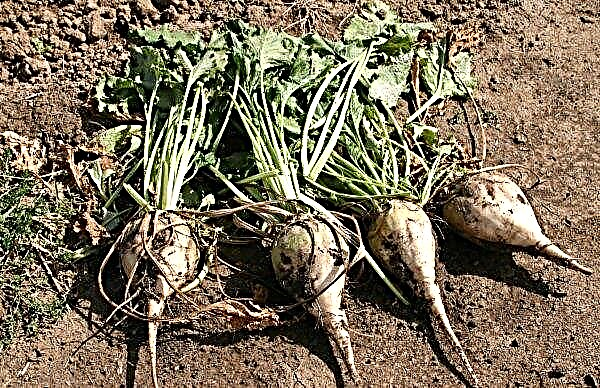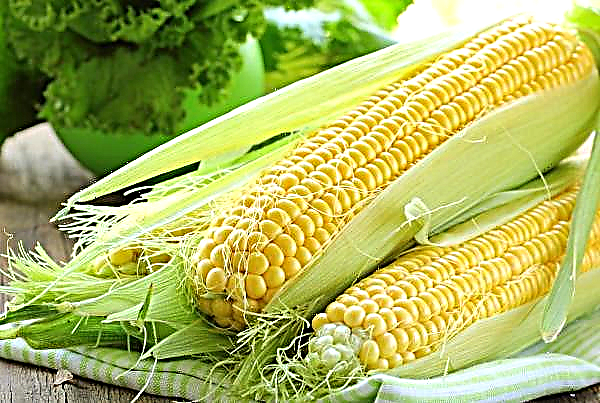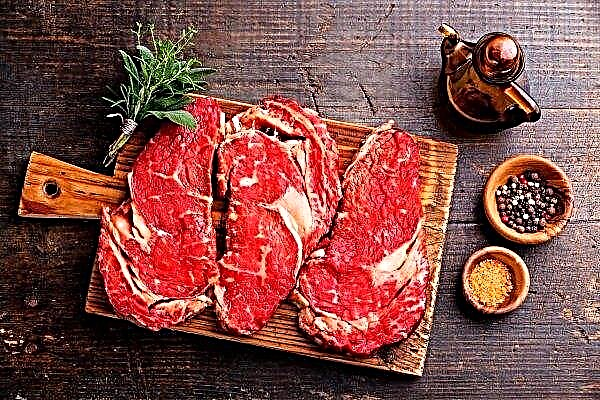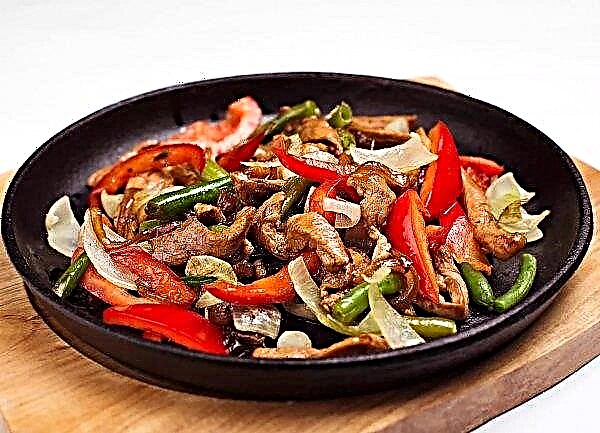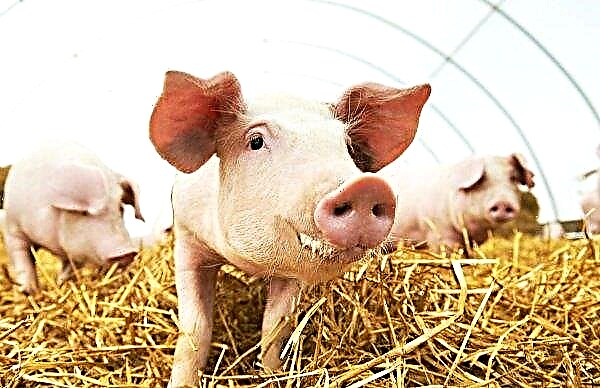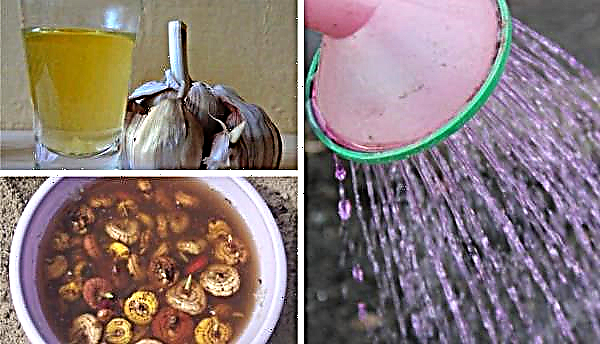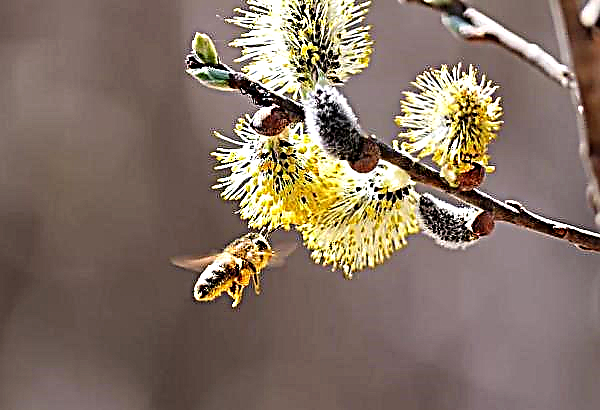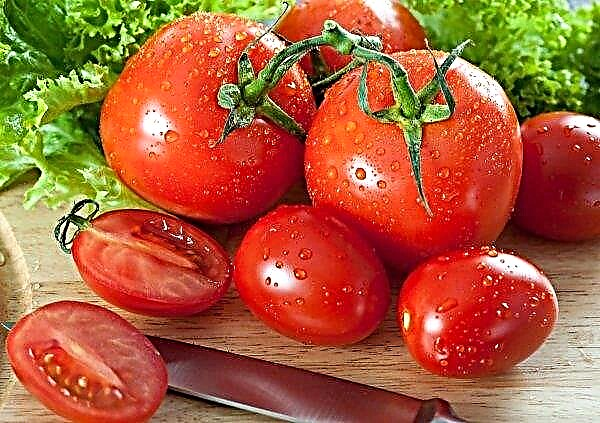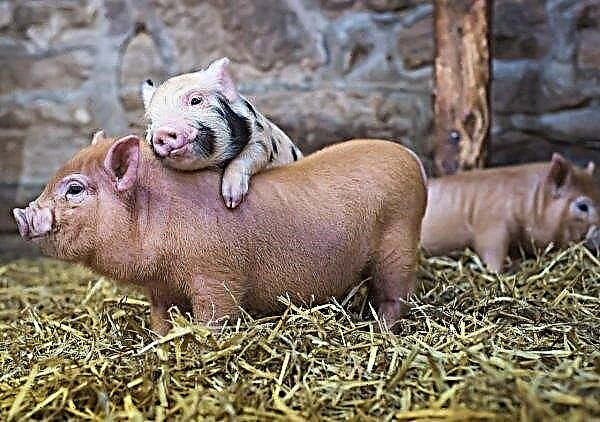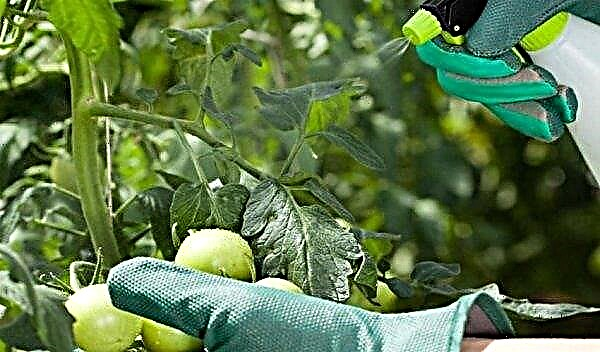Onions are a universal ingredient that is added to the composition of many different dishes. It is for this reason that it is popular among summer residents, gardeners, each of which necessarily grows it in their own area. In this article, onions of the Sturon variety will be considered - its characteristics, growing rules and recommendations for care.
Description and characteristics of the variety
Onion Sturon was bred in the Netherlands, and the predecessor was the well-known onion variety Stuttgart Riesen. Sturon is characterized by average ripening, so harvesting can begin as early as 100-115 days after germination of seedlings.
Manufacturers Sturon is classified as mid-early varieties. Due to this, it is suitable for cultivation in the northern regions, as well as in the middle lane. This onion easily withstands frosts, since the variety was originally intended for the harsh conditions of Northern Europe. Optimal for this vegetable are regions with a temperate and warm climate.
The variety gives large onions, the average weight of the vegetable is 110 g, but can even reach 180–220 g. The vegetable has an elongated shape, or the shape of an ellipse, which makes slicing easier, easier and more convenient. The bulbous neck is thin, the bottom is small. The upper scales have a sufficiently high density and yellow-brown color - this type of scales has 5 layers. Closer to the middle of the bulb, the flesh acquires a green color. The taste of the pulp is quite sharp, with a piquant bitterness, the smell is characteristic and pronounced.
Properties of Onion Sturon
Like any vegetable culture, onions have inherent beneficial properties, but at the same time it can be harmful. Before you grow it, you must be informed about these properties, as well as study the contraindications to its use.
Benefit
Onions of this variety are widely used both in cooking, and in medicine, and in cosmetology. This was facilitated by rich vitamin and mineral compounds. This onion is rich in vitamins of groups A, B, C, D, E, H, PP, as well as minerals such as potassium, calcium, chlorine, phosphorus, magnesium, sodium, iron, zinc, fluorine, copper and selenium. Useful is not only turnip, but also the green part due to the large amount of ascorbic acid and carotene.
- In general, we can distinguish the following list of positive properties of Sturon:
- Favorable effect on the digestive tract. Due to this vegetable, the production of digestive enzymes is activated, and all digestive processes are accelerated.
- Strengthening the immune system and increasing defenses - due to this, the body can withstand acute respiratory viral infections.
- Antimicrobial effect: this is why onions are used not only for nutrition, but also as an antiseptic and antibiotic.
- Onions are an antioxidant. If you regularly eat a vegetable, it can reduce the risk of cancer.
- It is used for preventive measures against atherosclerosis, as it lowers blood cholesterol and helps normalize the process of fat metabolism.
- Due to flavonoids and essential oils strengthens blood vessels.
- Refreshes the cellular composition of the blood.
- It has anti-inflammatory, antiviral and strengthening effect for external use.
It is also worth noting that:
- 100 g of onion contains 84 g of water, 1.6 g of protein, 0.3 g of fat, 7 g of carbohydrates, 4 g of dietary fiber, 1 g of ash substances;
- 5% tryptophan and 1% histidine are concentrated in the bulb.

Harm and contraindications
The vegetable has a high acidity, due to which hyperacid (with high acidity) gastritis can develop and irritation of the mucous membrane of the digestive tract can be caused. Also, this vegetable culture activates the nervous system, and therefore can raise the level of blood pressure.
Therefore, you should not eat a lot of this vegetable to people who suffer from such ailments as pancreatitis, peptic ulcer of the stomach and intestines, as well as those whose nervous system has increased excitability.
Important! People with kidney, liver, and heart problems, you should be careful to eat onions, otherwise, it can lead to an exacerbation of these diseases.
How to grow at home in the winter
For the winter planting of Sturon, it is necessary to study when to plant it and what are the optimal sowing dates, suitable conditions for cultivation, the required soil and fertilizers, and also what cultivation methods exist.
Optimum seeding time
Since Sturon is not afraid of frost, his seeds can be sown in the ground as soon as he thaws to a depth of 5-7 cm. In the middle zone of the Russian Federation this is often the second April decade. However, if spring came early, then the seeds should be planted even in the first days of April.
The onion set selected for planting in the fall is best planted 2-3 weeks before the arrival of stable frosts. This is usually the period from late September to the first decade of October. With spring planting, this may be a period of 1-2 weeks after the end of the morning frosts. Basically, it occurs from mid-April to the first of May.
Growing conditions
The optimal conditions for the cultivation of onions of this variety are as follows:
- temperature - +18 ... + 22 ° С;
- humidity - not lower than 80% at a depth of 40-50 cm;
- the site should be unsinkable, unshaded, sunny and dry;
- when sowing in regions with low rainfall and low aquifers, it is better to cultivate the vegetable on a flat area;
- in places with excessive humidity, it is better to sow onions on specially formed beds;
- the most suitable precursors for this crop are cucumbers, cabbage or radishes.
Soil and fertilizer
This vegetable crop likes nutritious soil, and therefore, before planting in future beds, it is necessary to add humus or chicken droppings, as well as top dressing three times during planting growth, using both organic and mineral fertilizers. It is worth noting that at the end of the growing season, nitrogenous fertilizers will create inconvenience for bulb ripening, since onions quickly absorb nitrates.
Suitable soil for onions is loose, loamy and fertile. If you plant a vegetable in a land poor in nutrients, then the bulbs will not be able to grow to the desired volume. On acid soils, Sturon also grows poorly. In addition, for planting a vegetable, it is necessary to clean the area under the beds from dry grass and weeds.Did you know? According to the UN, onions are grown in 175 countries, which is double the number of countries where wheat is grown (record holder in terms of yield).
Cultivation methods
There are 2 ways of cultivating onions of the Sturon variety: growing from seeds, and planting seed. It is worth noting that the winter method of cultivation is possible only when planting seedlings.
Seed cultivation
Mostly seeds are planted in April. Before planting the seeds, they need to be moistened in warm water, to which several drops of the Epin preparation have been added. Next, wrap in a small section of gauze and place on a windowsill, which is illuminated by the sun's rays. As soon as the gauze dries, it should be moistened so that growth processes are started.
Seeds germinate for 2–4 days, after which they can be laid out in the ground. For sowing, you need to make grooves in the soil about 1.5–2 cm deep. The optimal distance between the grooves is 20-30 cm. After the chernushka has been sown, the grooves should be sprinkled with peat or humus to a level of 2 cm. Humidify crops need occasionally.
Planting Sevka
As already mentioned, you can set onion sets both before the arrival of winter colds, and with the beginning of spring. For this, whole, not damaged bulbs without traces of rot and mold are selected. An indicator of quality sevka is dry rustling.
Before planting, onion sets should be soaked in a solution of copper sulfate or potassium permanganate (how much time to soak?) (In both cases - in a ratio of 1 g per 1 liter of water) or in salt water (1 tablespoon of salt per 1 liter of water). Then rinse the bulbs under running water, and then you can plant them in the ground. The holes need to be dug to a depth of 3 cm, the distance between them is at least 10 cm, and better - 20-30 cm.
Variety Care Features
Sturon does not need any special care. The rules are standard: watering, fertilizing, loosening the soil, as well as weeding.
Watering and feeding
Top dressing is carried out three times for the entire growing season. For this you will need organic and mineral fertilizers. Watering the beds abundantly is necessary only in the first half of the growing season, and after 2-3 weeks of harvesting the bulbs, the moistening should be completely stopped so that they can ripen. Watering should not be excessive, otherwise the bulbs will begin to rot and a significant part of the crop will be lost. Water the onion 1 time in 7-10 days. Watering temperature - +18 ... + 25 ° С.
Soil loosening
In quality of care for onion beds, regular loosening of the soil is required - then air and water will quickly reach the bulbs. Loosen the soil every time after heavy rain or watering. Thanks to loosening, it will be easier and easier, as well as more convenient, to weed.
Important! When loosening onions, it is necessary to go deep into the ground by 3 cm for better respiration of the roots.
Weeding
Weeds must also be weeded every time after heavy rain or watering, because if the ground is dry, then the entire root system of the weeds will remain in the ground. If the weeds are small, then you can remove them simply with your hands, protecting them with gloves. Weeds with a thick or long root system must be cut with scissors, and after that, the entire remaining part of the plant should be removed from the soil. If weeds are not removed, then the bulbs will grow small.

Diseases and Pests
This variety is resistant to diseases and pests, but protective and preventive measures still must be followed.
Before planting onions, many carry out the disinfection of bulbs in a special solution. For this, you can use the drug "Fitosporin". If you do not want to take risks and acquire a ready-made seed, then it is easy to grow it yourself from seeds. However, in this case, disinfection is also a necessary procedure.
For adult onion plantings, it is necessary to carry out treatment from pests and diseases. To do this, you can use the biological product "Fito plus." To prevent diseases, it is also worth changing the places of planting onion sets.Did you know? Onions contain more natural sugar than apples and pears.
One of the most common diseases affecting onions is downy mildew. It is necessary to deal with it before planting a vegetable in the soil. To do this, 2-3 weeks before planting, it is necessary to warm the bulbs in warm water at a temperature of no higher than + 40 ° C. This event should be held for 6-7 hours.
Often, pests are affected by onions. nematodes. To combat these worms, spraying should be carried out using the "Mercaptophos" and "Phosphamide" preparations.
Harvesting and storage
It is necessary to dig out the onion crop in dry weather, when the entire green part of the plant has dried and the neck has softened. To find out if the onion is ripe, you need to pay attention to the main sign of ripeness - all feathers begin to turn yellow and slope to the ground. Delaying the process of harvesting the vegetable can lead to the fact that the onion will begin to germinate and, as a result, will be poorly stored. Therefore, harvesting should be timely.
It is necessary to lay in storage this vegetable crop after it has completely dried out and aired so that there is no excess moisture left in it. You can not immediately move onions from the beds to the cellar, shed or other places to store the crop.
It is necessary to store onions in a cool place with a temperature of +2 ... + 4 ° С and not higher than +13 ... + 15 ° С, as well as with air humidity not exceeding 80%. Many gardeners prefer to store onions in the sand. It is also worthwhile to inspect all the bulbs before trimming, cut off the roots and dry tops, and also select specimens that are not ripe or spoiled.
For convenience, the onion should be laid out in boxes with holes made of wood or plastic. Thus, vegetables will be provided with ventilation, and space will be saved. The maximum height of the bulbs in the container should be no more than 8-10 cm.

Useful Tips
To get the best, plentiful and tasty crop, you should use the helpful recommendations for cultivating the variety:
- To get large onions in 2 years, you need to grow a vegetable in 2 stages: first - getting onion set from chernushka seeds, then planting this set.
- If you want to harvest a significant crop in 1 year, it is better to purchase a ready-made seed at an agricultural store.
- You can easily grow onions in many places in the house, up to the windowsill, at any time of the year, observing all the rules. So at home there will always be a fragrant onion feather for salads.
- Near onion plantings, it is recommended to place beds with dill or carrots. In this way, these vegetables will repel the parasites from each other.
- Do winter planting exclusively in cold and not frozen ground to prevent early seedling formations.
- In the spring, plant only in warm and prepared soil from the autumn period.
- You can’t pick off the green feathers, or else the harvest will not be generous.
Growing onions of the Sturon variety is a relatively simple process, and at the same time, it requires attention and accuracy, even despite the unpretentiousness of the culture. Subject to all the simple rules and recommendations for caring for onion plantings, you can regularly receive a plentiful and tasty crop.

